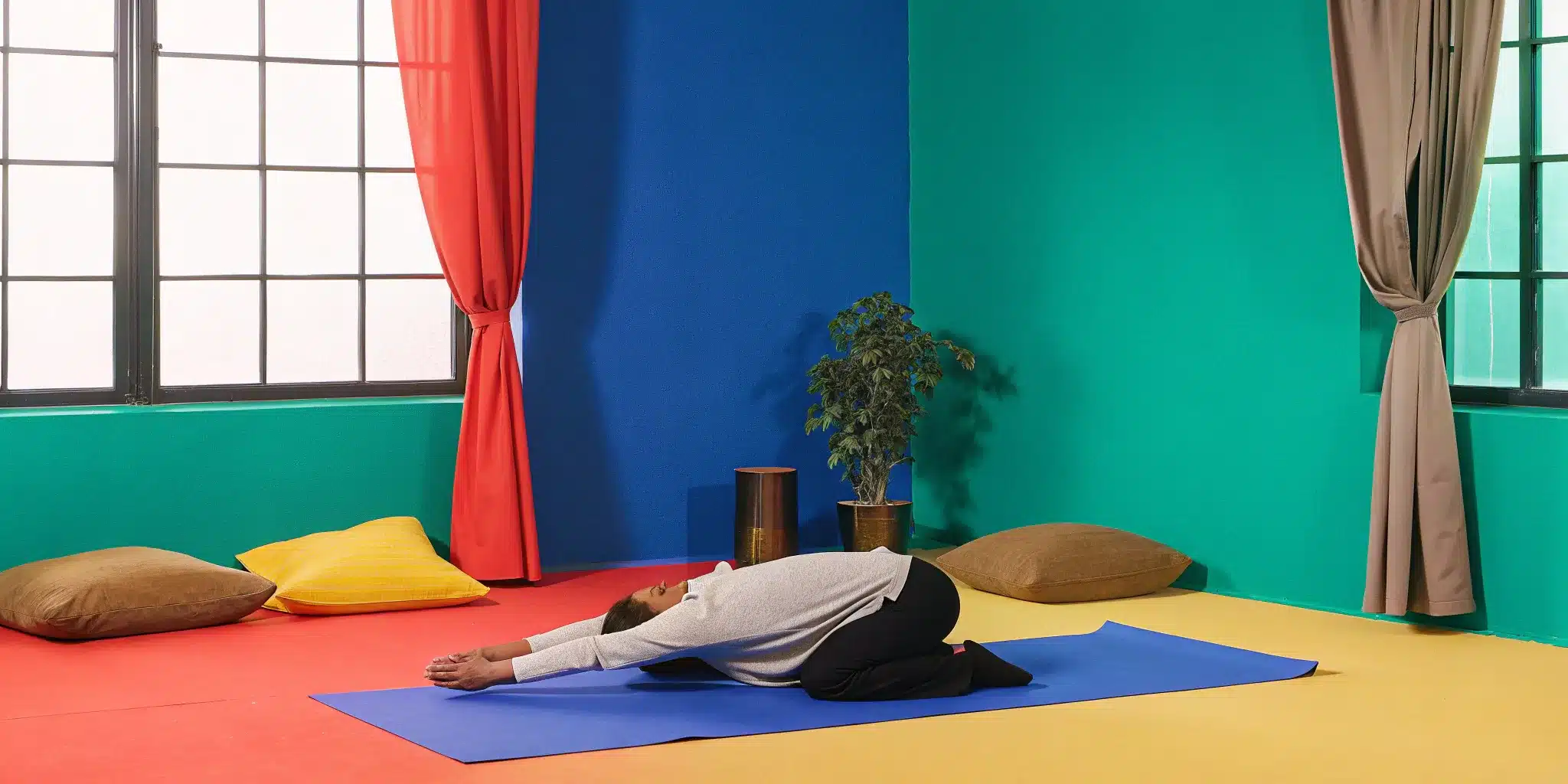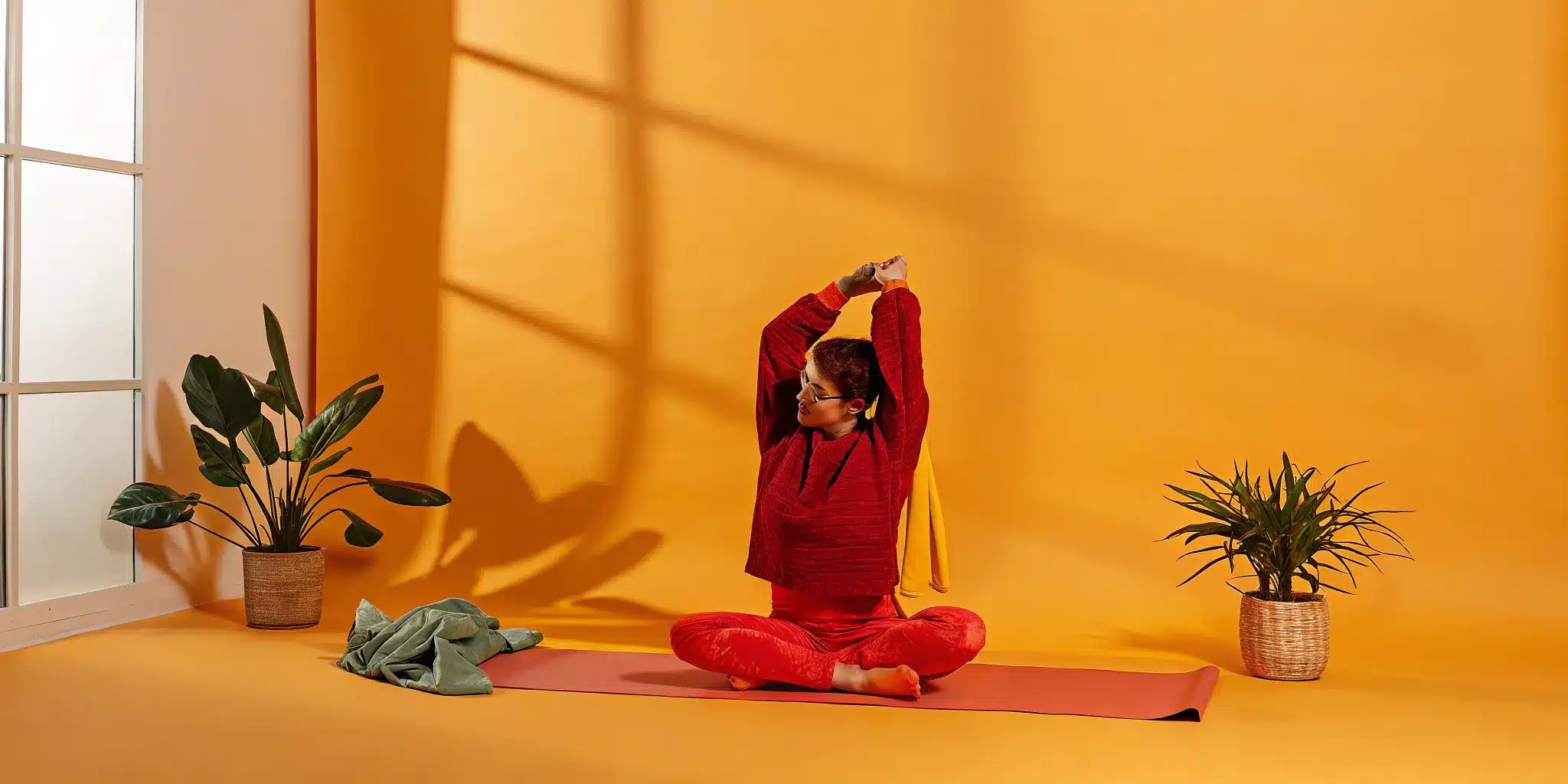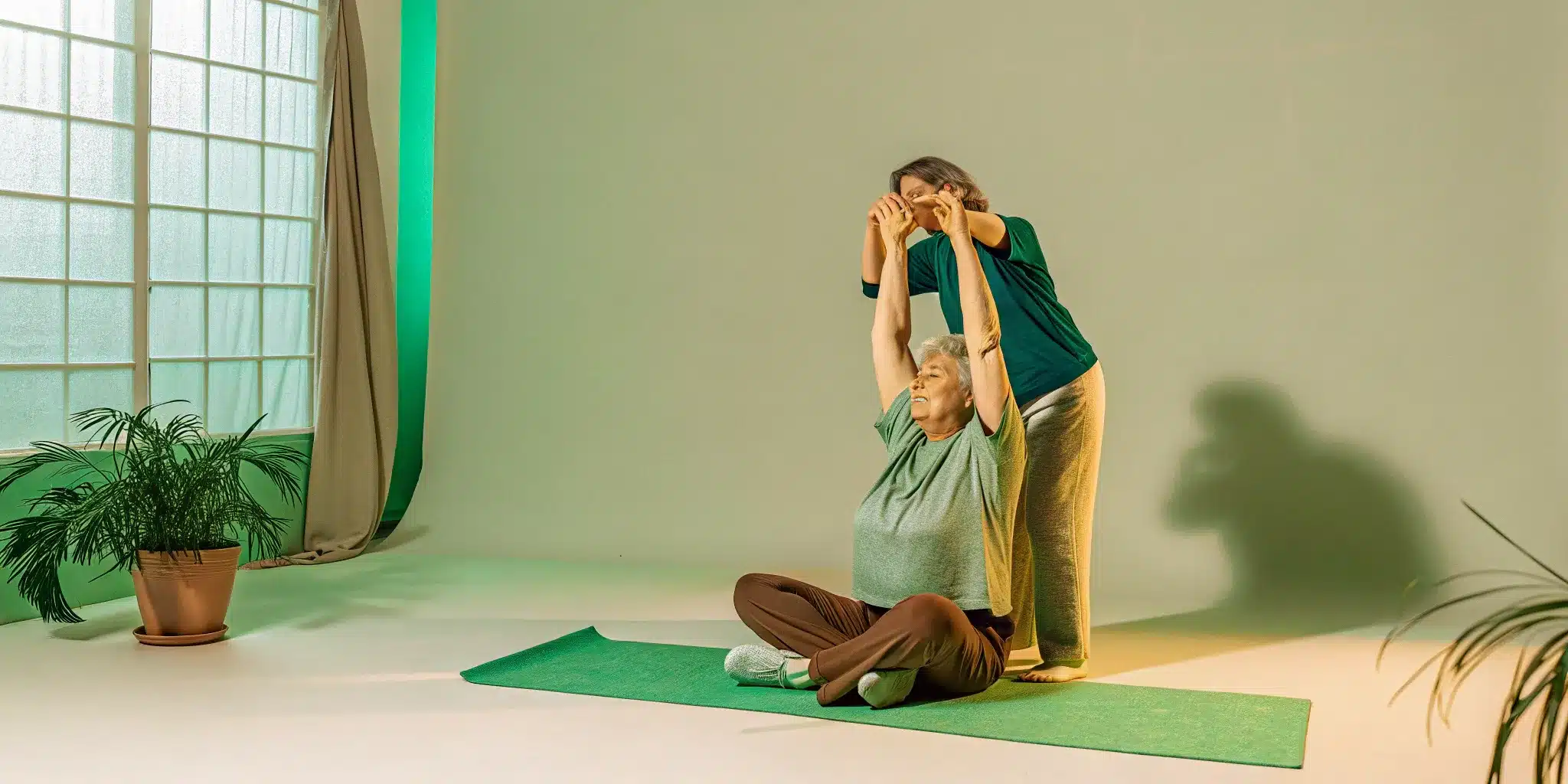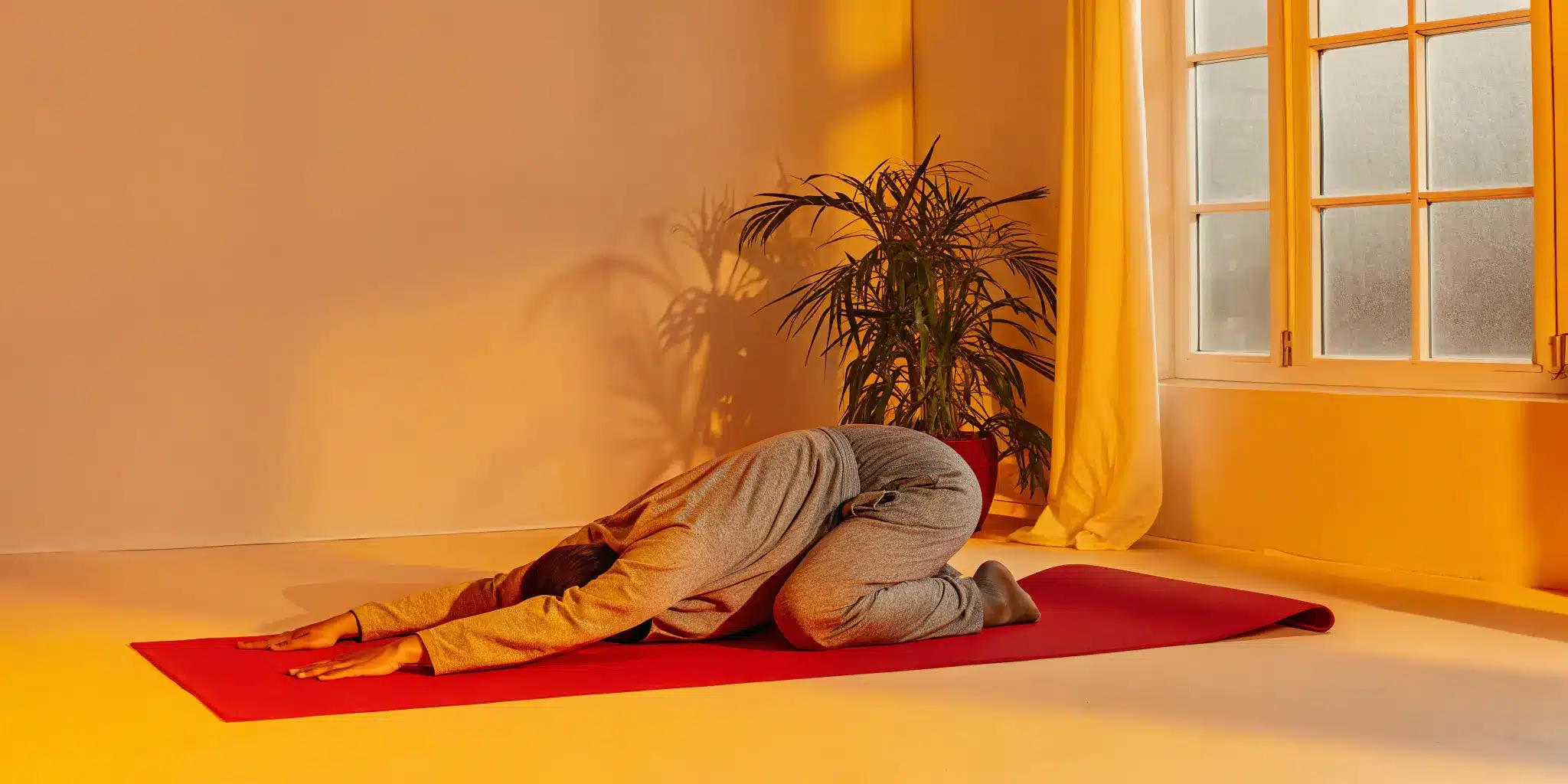It’s easy to think that hip stiffness is just a normal part of getting older or something only serious athletes need to worry about. But the truth is, everyone can improve their hip health, and you’re never too old or too out-of-shape to start. Believing you’re stuck with stiffness can prevent you from finding real relief. True hip mobility is a combination of flexibility and strength, and it’s accessible to all of us. The hip mobility benefits extend far beyond the gym, helping you maintain your independence, improve your balance, and stay active for years to come. This guide is here to show you that better movement is within your reach.
Key Takeaways
- Healthy Hips are the Foundation of Easy Movement: Improving your hip mobility isn’t just for athletes; it directly impacts your daily comfort by reducing strain on your lower back and knees, making everything from walking to bending feel better.
- Address the Root Cause by Moving More Often: A sedentary lifestyle is the main reason for tight hips. You can counteract this by simply standing up, walking, and doing gentle stretches every hour to prevent stiffness from setting in.
- Combine Stretching with Strength for Real Change: Lasting mobility comes from a balanced routine. Pair your flexibility work with simple strengthening exercises, like glute bridges, to build the stability needed to support your new range of motion.
What Is Hip Mobility, Really?
When we talk about hip mobility, we’re talking about the health and freedom of your hip joint. Think of it as your ability to move your hips through their full, intended path without pain, pinching, or stiffness. It’s a combination of flexibility in the surrounding muscles and the actual range of motion within the joint itself. When your hips are mobile, they can move forward, backward, side-to-side, and rotate with ease.
This freedom of movement is more than just being able to touch your toes. Healthy hip mobility allows for better posture, improved balance, and greater overall stability. It reduces unnecessary strain on other parts of your body, like your lower back and knees, which are often forced to compensate when your hips are tight. Whether you’re an athlete, a weekend warrior, or simply want to move through your day without discomfort, understanding and improving your hip mobility is a foundational step toward feeling your best. It’s about giving your body the support it needs to function smoothly and efficiently.
How Your Hips Are Designed to Move
Your hips are the powerhouse of your body, acting as the central link between your upper and lower halves. This ball-and-socket joint is designed for an incredible amount of movement, supporting you in almost everything you do. From walking and climbing stairs to bending down to tie your shoes, your hips play a major role. Good hip mobility ensures these movements are smooth and efficient. When your hips can move freely, your entire body benefits, allowing for a more powerful stride, a deeper squat, and a more stable foundation for all your daily activities and athletic performance.
What “Range of Motion” Actually Means
You’ve probably heard the term “range of motion,” but what does it really mean for your hips? Simply put, it’s the full movement potential of a joint—how far and in which directions it can move. For your hips, this includes flexion (bringing your knee to your chest), extension (moving your leg behind you), abduction (moving your leg out to the side), and rotation (turning your leg in and out). A healthy
Signs Your Hips Are Asking for Help
Your body is great at sending signals when something isn’t right, and your hips are no exception. You might have limited hip mobility if you feel stiffness in your groin or thigh, or if you struggle with activities like putting on socks and shoes. Pain in your lower back or knees can also be a red flag, as these areas often take on extra stress when the hips aren’t moving well. You might even notice compensatory movements, like your back rounding excessively when you try to squat. Paying attention to these signs is the first step toward addressing the root cause and getting your body back in balance.
Why Healthy Hips Are a Game-Changer
We often don’t think about our hips until they start to ache, but they are the powerhouse behind almost every move we make. From walking up the stairs to getting out of a car, your hips are working hard. When they’re mobile and healthy, life just feels easier. Improving your hip mobility isn’t just about feeling less stiff; it’s about creating a better quality of life, reducing pain, and helping you move freely and confidently. Let’s look at the incredible benefits of giving your hips the attention they deserve.
Move with Ease Through Your Day
Think about all the simple movements you do without a second thought: bending down to tie your shoes, squatting to pick up a package, or even just sitting comfortably at your desk. Healthy, mobile hips are what make these everyday tasks feel effortless. When your hips can move through their full range of motion, you place less strain on other parts of your body. This means less groaning when you get up from a chair and more ease as you go about your day. Good hip mobility truly makes everyday tasks simpler, allowing you to focus on what you’re doing, not the discomfort you’re feeling.
Step Up Your Athletic Performance
Whether you’re a seasoned athlete, a weekend warrior, or just enjoy a brisk walk, your performance hinges on your hips. They are central to generating power and enabling fluid movement. With good hip mobility, you can move more smoothly and efficiently, which translates to a longer stride when you run, a deeper squat when you lift, and quicker changes in direction. This efficiency not only helps you perform better but also conserves energy, so you can go that extra mile or play that extra round. It’s a foundational element that supports all your athletic goals, helping you feel stronger and more capable in any activity you choose.
Prevent and Manage Aches and Pains
If you struggle with nagging lower back pain, your hips might be the real culprit. When your hips are tight and immobile, your body has to find that movement somewhere else, and the lower back often takes the hit. This compensation pattern can lead to chronic strain, stiffness, and pain. By focusing on improving your hip mobility, you can take a significant amount of pressure off your lumbar spine. This simple change can help prevent lower back pain from developing or provide much-needed relief if it’s already a part of your daily life. It’s a proactive way to care for your entire core and posterior chain.
Lower Your Risk of Injury
Keeping your hips mobile is one of the best things you can do to protect your body from injury. When your hips can’t move properly, other joints like your knees and ankles are forced to compensate, putting them at risk for sprains and strains. Over time, poor hip mobility can lead to bigger problems, creating a domino effect of imbalances throughout your body. By maintaining a healthy range of motion in your hips, you ensure that your body moves as it was designed to. This distributes force more evenly during activities, from walking to high-impact sports, significantly reducing your chances of getting sidelined by an unexpected injury.
Improve Your Overall Quality of Life
Ultimately, healthy hips allow you to live your life more fully. When you can move without pain and restriction, you’re more likely to stay active, try new things, and participate in the activities you love. Taking care of your hip mobility helps you stay agile and active for years to come, maintaining your independence and vitality. It’s never too late to start improving your hip health. Even small, consistent efforts can lead to big improvements in how you feel and move, giving you the freedom to enjoy every day with more energy and less discomfort.
What Causes Tight Hips?
If your hips feel constantly tight, you’re not alone. This common issue often stems from daily habits, your body’s history, and the natural aging process. Understanding the root causes is the first step toward finding relief and moving more freely. Let’s look at some of the most common culprits behind that stiff, stuck feeling.
The Impact of a Sedentary Lifestyle
Many of us spend hours a day sitting at a desk or in a car. This keeps the muscles at the front of your hips in a shortened position, causing them to tighten over time. At the same time, your glute muscles can weaken from inactivity. This common imbalance is a primary cause of poor hip mobility and can make simple movements feel stiff and restricted. Breaking up long periods of sitting with short walks or simple stretches is a great way to start counteracting these effects.
How Poor Movement Patterns Limit You
Your body works as a connected system. When your hips are too stiff to do their job, other areas must compensate. If your hips can’t move freely, your lower back and knees often take on extra strain to help you walk, bend, and climb stairs. This compensation is why limited hip mobility can cause pain and problems in seemingly unrelated parts of your body. That nagging knee or back ache could actually be a sign that your hips are the real source of the issue.
The Role of Age in Hip Health
While anyone can get tight hips, the issue does become more common as we get older. The cumulative effect of daily habits, combined with natural changes in our joints and muscles, can lead to increased stiffness. This doesn’t mean tight hips are inevitable, but it does show why hip mobility matters more as time goes on. By focusing on regular movement and stretching, you can counteract these effects, maintain your range of motion, and stay active for years to come.
Lingering Effects from Past Injuries
Old injuries can leave behind a legacy of tightness long after they’ve healed. A previous fall, strain, or sports injury can create scar tissue and muscle imbalances around the hip joint. Your body may also adopt a protective “guarding” response, keeping the area tight to prevent further harm, which can result in chronic stiffness. Working to alleviate lingering effects with targeted stretching helps release that long-held tension and restore balance to your body.
The Best Exercises for Mobile Hips
Ready to help your hips feel their best? Improving your mobility isn’t about forcing yourself into complicated poses. It’s about incorporating gentle, consistent movements into your routine to reduce stiffness and move more freely. Think of these exercises as a toolkit you can use to support your body. By combining warm-ups, targeted stretches, and strengthening work, you can create a balanced practice that helps you feel more comfortable and capable in your daily life.
The key is to listen to your body and start slowly. You don’t need a ton of equipment or a huge time commitment to make a real difference. Let’s walk through a few simple, effective exercises you can start doing today to give your hips the attention they deserve.
Start with Dynamic Warm-ups
Before you jump into any deep stretching, it’s important to warm up your muscles. Think of it as waking up your hips and letting them know you’re about to move. Dynamic warm-ups are perfect for this because they gently take your joints through their range of motion, increasing blood flow and preparing the surrounding tissues for activity. This simple step helps make your hips more responsive and can reduce the risk of strain.
A few great dynamic warm-ups include leg swings (forward-and-back and side-to-side), hip circles, and walking lunges with a gentle twist. Spend just a few minutes on these movements before you stretch or work out. The goal isn’t to push your limits but to ease into movement smoothly.
Try These Targeted Stretches
Once your hips are warm, you can move into more targeted stretches to release tension. Two of the most effective stretches for opening up the hips are the Pigeon Stretch and the Hip-Flexor Stretch. The Pigeon Stretch is fantastic for targeting the deep glute muscles and outer hip, while a simple kneeling hip-flexor stretch helps lengthen the muscles at the front of your hips, which often get tight from sitting.
When you’re holding these stretches, focus on your breathing and try to relax into the position. You should feel a gentle pull, not sharp pain. If a stretch feels too intense, ease up a bit. Remember, consistency is what matters most, and these targeted stretches are a great way to relieve tightness and gradually improve your flexibility over time.
Use a Foam Roller for Relief
If you have a foam roller, it can be an amazing tool for hip mobility. Foam rolling is a form of self-myofascial release, which is just a technical way of saying self-massage. It helps break up knots and reduce stiffness in the muscles and connective tissues around your hip joint. By rolling out areas like your glutes, outer thighs (IT band), and hip flexors, you can help improve your range of motion and find some much-needed relief.
Start by applying gentle pressure and roll slowly over the targeted muscle for about 30 seconds. If you find a particularly tender spot, you can pause and hold the pressure for a moment to help it release. Using a foam roller is a proactive way to manage muscle tightness before it becomes a bigger problem.
Build Strength for Better Stability
Flexibility is only half the equation when it comes to healthy hips; you also need strength to support and control your movement. When your hip muscles are strong, they provide stability to the joint, which helps you maintain your mobility and prevent injuries. Weak glutes and hip stabilizers can often contribute to that feeling of tightness or instability.
Simple bodyweight exercises like glute bridges, clamshells, and side leg raises are excellent for targeting these important muscles. You don’t need heavy weights to be effective. The goal is to build a solid foundation of support. Incorporating hip strengthening exercises into your routine ensures that you’re not just flexible, but also strong and stable through your entire range of motion.
How Often (and How Long) to Practice
You don’t need to dedicate hours every day to see results. The sweet spot for improving hip mobility is consistency. Aim to practice your routine about three to four times a week. Each session doesn’t have to be long—even five to ten minutes of focused work can make a significant impact over time. You could do a short routine in the morning to start your day, or wind down with some stretches in the evening.
The most important thing is to create a habit that you can stick with. It’s better to do a short, consistent practice several times a week than one long, intense session once in a while. Listen to your body, find a schedule that works for you, and enjoy the process of moving more freely.
How to Build Your Hip Mobility Routine
Creating a routine that sticks is all about starting small and being consistent. You don’t need to spend an hour every day to see results. The key is to build a sustainable practice that addresses your specific needs, helps you stay motivated, and includes professional support when you need it. Here’s how you can build a hip mobility routine that works for you.
Assess Your Current Mobility
Before you jump into a new routine, it’s helpful to know where you’re starting. This isn’t about judging yourself—it’s about getting a clear picture of your current range of motion. Hip mobility is more than just being flexible; it’s about having the strength and control to move your joints through their full range. A simple way to check in with your body is to try a deep squat. How far can you go? Do you feel pinching or tightness? Another test is to lie on your back and gently pull one knee toward your chest, then across your body. Pay attention to how it feels. This initial assessment gives you a baseline so you can celebrate your progress later.
Create a Consistent Daily Practice
Consistency is far more important than intensity. Even 10 minutes of focused movement each day can make a huge difference. The best way to stick with it is to link your new habit to an existing one. Maybe you can do a few hip circles while your coffee brews in the morning or some gentle stretches while you watch your favorite show at night. Incorporating hip mobility exercises into your daily life doesn’t have to feel like a chore. By making it a regular part of your day, you’re investing in your long-term health and well-being, one small movement at a time. Find what feels good and make it a non-negotiable part of your self-care.
Know When to Seek Professional Guidance
It’s important to listen to your body and distinguish between the discomfort of a good stretch and sharp, persistent pain. If you have ongoing hip pain or stiffness, it’s always a good idea to check in with a doctor or physical therapist to understand what’s going on. Sometimes, you might hit a plateau where you feel stuck, or you might be dealing with chronic tightness that doesn’t seem to improve with at-home exercises. This is where professional guidance can be a game-changer. Working with a trained professional, like a stretch therapist, can help you safely move past those limitations and get to the root of your discomfort.
Simple Ways to Track Your Progress
Progress isn’t always measured by how flexible you are. Instead, focus on how you feel in your daily life. Can you bend down to tie your shoes more easily? Do you feel less stiff when you get out of a chair? These are the real wins. It’s helpful to remember that mobility and flexibility are different. Mobility exercises help your joints move freely, while flexibility focuses on lengthening your muscles. For the best results, you need both. To see how far you’ve come, try taking a quick video of yourself doing a specific stretch once a month. You might be surprised by the visual evidence of your hard work.
Common Mistakes to Avoid
One of the biggest mistakes is thinking that passive stretching alone will solve everything. While it feels good, just stretching or foam rolling often provides only temporary relief. That’s because your body hasn’t learned how to control the new range of motion you’ve just created. To make lasting change, you need to pair stretching with strengthening exercises. Another common pitfall is pushing through sharp pain. A stretch should feel like a gentle pull, not a stabbing sensation. Finally, avoid inconsistency. Doing mobility work sporadically won’t give your body the regular input it needs to adapt and improve. Stick with your routine, and be patient with your progress.
Hip Mobility Myths, Busted
When it comes to hip mobility, there’s a lot of chatter out there. It’s easy to get tangled up in misconceptions that can hold you back from feeling your best. You might think it’s only for gymnasts, that you’re too old to start, or that endless stretching is the only answer. It’s time to clear the air and bust some of the most common myths so you can focus on what truly works for your body. Let’s separate fact from fiction and get you on a clear path to healthier, happier hips.
It’s About More Than Just Flexibility
Many people use the words “flexibility” and “mobility” interchangeably, but they’re actually two different things. Flexibility is your muscle’s ability to lengthen passively—think sitting and reaching for your toes. Mobility, on the other hand, is your ability to actively move a joint through its full range of motion with control. True hip mobility combines flexibility with strength and stability. It’s not just about how far you can stretch; it’s about having the strength to control your movement through that entire range. This control is what helps you move efficiently and without pain in your daily life.
Mobility Isn’t Just for Athletes
You don’t have to be a professional athlete to reap the rewards of better hip mobility. This isn’t a skill reserved for the super-fit. In fact, it’s arguably more important for everyday life. Good hip mobility allows you to bend down to tie your shoes, get in and out of a car, play with your kids, or simply walk without discomfort. For older adults, focusing on mobility can be a game-changer for maintaining independence, improving balance, and staying active. Everyone, regardless of their fitness level, deserves to move with ease and confidence.
You Can Improve Your Hips at Any Age
It’s a common belief that once you hit a certain age, your stiffness is set in stone. This is simply not true. While age can bring changes to our bodies, you are never too old to improve your hip mobility. The key is consistency and the right approach. Gentle, targeted exercises and stretches can help reduce pain and restore function at any stage of life. Your body has an amazing capacity to adapt and heal. With patience and the right guidance, you can absolutely increase your range of motion and feel more comfortable in your body, whether you’re 35 or 75.
Why Strength Training is Key
While stretching is an important piece of the puzzle, it’s not the only one. If you only focus on stretching without building strength, you can create instability in your joints. Strength training is crucial for developing the muscles that support and control your hip joints. When you perform controlled exercises like squats and lunges, you’re not just building muscle; you’re teaching your body how to manage loads through a full range of motion. This combination of strength and flexibility is what creates stable, resilient, and truly mobile hips that can support you through any activity.
How to Maintain Healthy Hips for Life
Once you’ve started to improve your hip mobility, the key is to keep that momentum going. Maintaining healthy hips isn’t about a one-time fix; it’s about building simple, sustainable habits that support your joints for the long haul. Think of it as ongoing maintenance for one of the most important areas of your body. By weaving small, consistent efforts into your daily life, you can prevent future tightness, reduce your risk of pain, and continue to move with freedom and ease. It’s about creating a lifestyle that supports your mobility goals, ensuring your hips stay happy and healthy for years to come.
Strategies to Prevent Future Tightness
The best way to deal with tight hips is to prevent them from getting that way in the first place. Good hip mobility is essential for everyone, helping you perform daily activities like walking, bending, and climbing stairs without a second thought. When your hips are stiff, other parts of your body, like your lower back, have to compensate. Over time, poor hip mobility can lead to chronic back pain and increase your risk of injury. By proactively focusing on keeping your hips mobile, you’re not just addressing current discomfort—you’re investing in your future health and preventing bigger problems down the road.
Simple Lifestyle Changes for Lasting Results
You don’t need to overhaul your entire life to maintain healthy hips. Small, consistent changes can make a huge difference. If you have a desk job, make a point to stand up, walk around, and do a few gentle stretches every hour. When you’re relaxing at home, try sitting on the floor in different positions to open up your hips naturally. Incorporating simple hip mobility exercises into your daily routine is a powerful way to support your physical health. These small adjustments add up, helping you build a foundation of mobility that lasts.
Create Your Long-Term Maintenance Plan
A long-term plan for hip health is all about consistency. Your hip joints, like any other joint, thrive on movement. Regular motion stimulates the production of synovial fluid, which is like natural lubrication that helps the joint move smoothly and reduces wear and tear. Your maintenance plan should include a mix of dynamic stretches, strengthening exercises, and mobility work. The goal is to create a balanced routine that you can stick with. It doesn’t have to be complicated—just a few key movements performed regularly can keep your hips feeling open and pain-free.
Weave Mobility into Your Daily Routine
The easiest way to stay consistent is to attach your mobility practice to habits you already have. You don’t need to set aside a full hour every day. Instead, find small pockets of time to move. Try to spend at least five minutes a day stretching your hips. You could do a few hip circles while your coffee brews in the morning, perform a deep squat during a TV commercial break, or do a gentle stretch while you brush your teeth at night. By making mobility a seamless part of your day, it becomes an effortless habit rather than another item on your to-do list.
When It’s Time to Call a Professional
While a consistent home routine is fantastic, sometimes you need a little extra support. If you’re experiencing persistent hip pain, stiffness that won’t go away, or a clicking or popping sensation, it’s a good idea to check in with a professional. A physical therapist or a certified stretch practitioner can help you identify the root cause of your issues. They can provide a personalized plan and hands-on assistance to safely guide your body into deeper, more effective stretches. Knowing why hip mobility matters is the first step, and seeking expert guidance is a great way to ensure you’re on the right track.
Related Articles
- How to Improve Mobility After 60: A Complete Guide – STRETCHMED
- The Purpose of Range of Motion & Why You Need It – STRETCHMED
- Mobility Exercises for Beginners: A Simple Guide – STRETCHMED
- Dynamic Stretching Legs: 10 Moves for Your Warm-Up – STRETCHMED
Frequently Asked Questions
How long until I feel a difference in my hip mobility? There’s no magic timeline, but with consistent effort, you can start to feel less stiffness in as little as one or two weeks. Bigger improvements in your range of motion will take a bit longer, likely a month or more. The best way to measure progress is to notice how you feel in your daily activities. Pay attention to small wins, like being able to tie your shoes or get out of the car with greater ease.
Is it okay to do these exercises if I’m already in pain? It’s crucial to listen to your body. A gentle pulling sensation during a stretch is productive, but sharp or stabbing pain is a clear signal to stop. If you’re dealing with persistent or intense hip pain, it’s always best to consult a doctor or physical therapist first. They can help you understand the source of the pain and ensure you’re choosing movements that will help, not harm.
I stretch my hips all the time, but they still feel tight. Why? This is a common frustration, and it often points to a missing piece of the puzzle: strength. Sometimes, that feeling of tightness is your body’s way of creating stability around a weak joint. If you only focus on passive stretching, you aren’t teaching your body how to control its new range of motion. Pairing your stretches with strengthening exercises for your glutes and core is what creates lasting change and helps your hips feel both open and supported.
Should I do my hip mobility routine before or after a workout? You can do both, but the focus should be different. Before a workout, stick to dynamic movements like leg swings and hip circles. This serves as a great warm-up, increasing blood flow and preparing your joints for activity. Save your longer, static holds, like a pigeon stretch, for after your workout. Your muscles will be warm and more receptive to stretching, which can aid in recovery.
What’s the difference between hip mobility and just being flexible? Think of it like this: flexibility is your muscle’s ability to lengthen, like when you passively sit in a stretch. Mobility is your ability to actively move your hip joint through its entire range of motion with strength and control. You need flexibility to have good mobility, but mobility is the more functional skill. It’s what allows you to perform a deep squat or lift your knee to your chest without using your hands for help.








